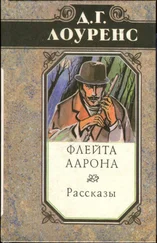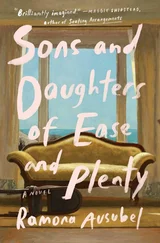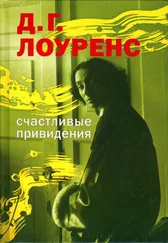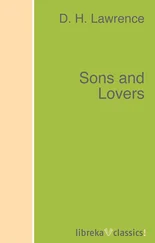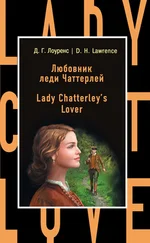Дэвид Лоуренс - Sons and Lovers
Здесь есть возможность читать онлайн «Дэвид Лоуренс - Sons and Lovers» весь текст электронной книги совершенно бесплатно (целиком полную версию без сокращений). В некоторых случаях можно слушать аудио, скачать через торрент в формате fb2 и присутствует краткое содержание. Жанр: Старинная литература, на английском языке. Описание произведения, (предисловие) а так же отзывы посетителей доступны на портале библиотеки ЛибКат.
- Название:Sons and Lovers
- Автор:
- Жанр:
- Год:неизвестен
- ISBN:нет данных
- Рейтинг книги:3 / 5. Голосов: 1
-
Избранное:Добавить в избранное
- Отзывы:
-
Ваша оценка:
- 60
- 1
- 2
- 3
- 4
- 5
Sons and Lovers: краткое содержание, описание и аннотация
Предлагаем к чтению аннотацию, описание, краткое содержание или предисловие (зависит от того, что написал сам автор книги «Sons and Lovers»). Если вы не нашли необходимую информацию о книге — напишите в комментариях, мы постараемся отыскать её.
Sons and Lovers — читать онлайн бесплатно полную книгу (весь текст) целиком
Ниже представлен текст книги, разбитый по страницам. Система сохранения места последней прочитанной страницы, позволяет с удобством читать онлайн бесплатно книгу «Sons and Lovers», без необходимости каждый раз заново искать на чём Вы остановились. Поставьте закладку, и сможете в любой момент перейти на страницу, на которой закончили чтение.
Интервал:
Закладка:
Introduction
THE STORY of how and why D. H. Lawrence wrote Sons and Lovers is a love story as much as it is a story about literature. The story begins at D. H. Lawrence’s birth and ends just before the outbreak of World War One. Although it is a love story, it is not a story about amor, per se, the exclusive romantic love. Rather, it is about love in all its various guises—love for the Mother Country and the mother, love for the work of writing and, above all, love for life itself D. H. Lawrence was a passionate man; he threw himself into life. In his presence, his peers were aware of life lived more highly, of emotions felt more truly and of the rawness of human experience. Lawrence took life in huge gulps, personalizing it and, in the end, changing it to suit his own artistic goals.
“I remember seeing him sitting apart at a table doing matriculation work,” writes Jessie Chambers in her book D. H. Lawrence: A Personal Record (see “For Further Reading”). “He smiled across at me, and I saw again his uniqueness, how totally different he was from any of the other youths.... There was his sensitiveness ... his delicacy of spirit, that, while it contributed vitally to his charm, made him more vulnerable, more susceptible to injury from the crudeness of life” (p. 47).
Sons and Lovers is Lawrence’s third novel. He began writing it when he was twenty-five years old, a young, sensitive schoolteacher with periodic bouts of pneumonia and a penchant for problems of the heart. The novel underwent four major revisions and a name change before being published in 1913. As conceived, it was to be a book based on fact: the story of the young man, Paul Morel, growing up in a coal-mining district of the English Midlands. As such, it would be a thinly disguised fictionalization of Lawrence’s own life, a portrait of the artist as a young man or, as the critic Harold Bloom suggests, a portrait of the artist as a young prig.
Lawrence was born in 1885 in a lower-middle-class town in Nottinghamshire during a time in English history characterized by repressive social mores, strict morality, and austere, even ascetic, religious practices. In other words, the author was born at a time and in a place particularly inclined toward priggishness.
Lawrence chaffed under the yoke of Victorian England. His gift of perception, which told him that life was a vast mystery and wonder, also told him that his country was ruining itself with its industrialization, its mechanization, and its impulse toward war. As he grew up, he grew intolerant. “Curse you, my countrymen,” he wrote to Edward Garnett, his publisher and friend, in a letter dated July 1912, “you have put the halters round your necks, and pull tighter and tighter from day to day. You are strangling yourselves, you blasted fools” ( The Letters of D. H. Lawrence, Vol. 1, edited by James T. Boulton). To borrow Lawrence’s own phrase, England suffered under a “Thou Shalt Not” mentality.
Lawrence longed for the implied permission of the “Thou Shalt,” two words that promise not only freedom but also free will. The purpose of life, Lawrence wrote, was not simply to live, but to live vitally and at the edge of the great mystery of existence. This will to live—or, perhaps more correctly, the will toward life—was, in a characteristically Lawrencian sense, mixed up with a philosophy of sex. With more emotion than logic, Lawrence felt that “Thou Shalt,” when murmured by a partially clothed woman, promised not only sexual union but also spiritual union. His philosophy is not simply, as future critics would categorize it, “sex in the head.” What Lawrence wanted was not crude, not base, not purely sexual. “It’s a pity that sex is such an ugly little word,” Lawrence wrote in an essay titled “Sex Versus Loveliness.” “While ever it lives, the fire of sex, which is the source of beauty and anger, burns in us beyond our understanding.... Sex and beauty are one thing, like flame and fire. If you hate sex, you hate beauty.” Lawrence wanted, through sex, to understand beauty and through beauty, mystery. It was this understanding that Lawrence defined as intuition, and it was this intuition that Lawrence felt to be his prime talent as a writer.
Читать дальшеИнтервал:
Закладка:
Похожие книги на «Sons and Lovers»
Представляем Вашему вниманию похожие книги на «Sons and Lovers» списком для выбора. Мы отобрали схожую по названию и смыслу литературу в надежде предоставить читателям больше вариантов отыскать новые, интересные, ещё непрочитанные произведения.
Обсуждение, отзывы о книге «Sons and Lovers» и просто собственные мнения читателей. Оставьте ваши комментарии, напишите, что Вы думаете о произведении, его смысле или главных героях. Укажите что конкретно понравилось, а что нет, и почему Вы так считаете.


